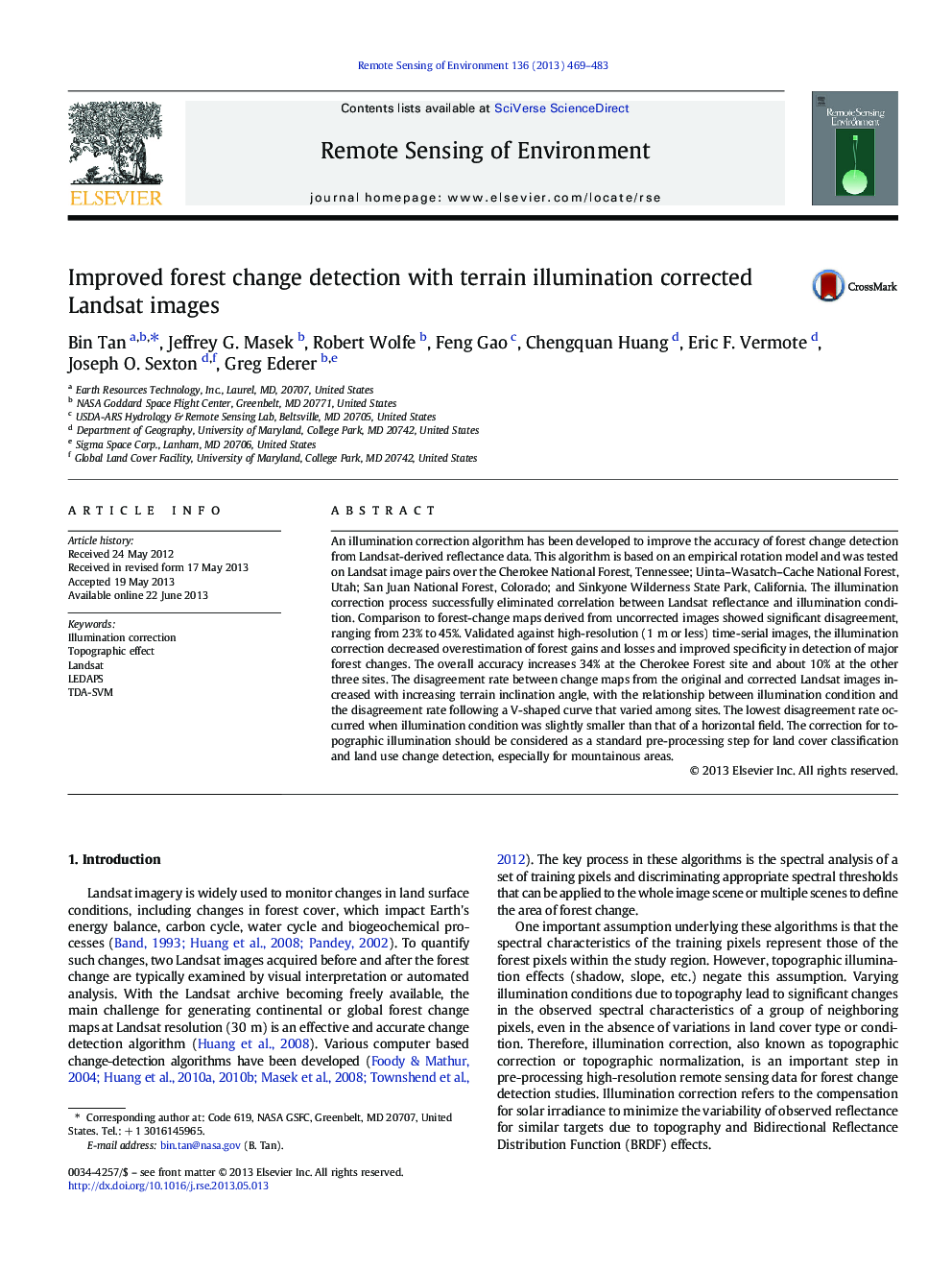| Article ID | Journal | Published Year | Pages | File Type |
|---|---|---|---|---|
| 6347446 | Remote Sensing of Environment | 2013 | 15 Pages |
Abstract
An illumination correction algorithm has been developed to improve the accuracy of forest change detection from Landsat-derived reflectance data. This algorithm is based on an empirical rotation model and was tested on Landsat image pairs over the Cherokee National Forest, Tennessee; Uinta-Wasatch-Cache National Forest, Utah; San Juan National Forest, Colorado; and Sinkyone Wilderness State Park, California. The illumination correction process successfully eliminated correlation between Landsat reflectance and illumination condition. Comparison to forest-change maps derived from uncorrected images showed significant disagreement, ranging from 23% to 45%. Validated against high-resolution (1Â m or less) time-serial images, the illumination correction decreased overestimation of forest gains and losses and improved specificity in detection of major forest changes. The overall accuracy increases 34% at the Cherokee Forest site and about 10% at the other three sites. The disagreement rate between change maps from the original and corrected Landsat images increased with increasing terrain inclination angle, with the relationship between illumination condition and the disagreement rate following a V-shaped curve that varied among sites. The lowest disagreement rate occurred when illumination condition was slightly smaller than that of a horizontal field. The correction for topographic illumination should be considered as a standard pre-processing step for land cover classification and land use change detection, especially for mountainous areas.
Related Topics
Physical Sciences and Engineering
Earth and Planetary Sciences
Computers in Earth Sciences
Authors
Bin Tan, Jeffrey G. Masek, Robert Wolfe, Feng Gao, Chengquan Huang, Eric F. Vermote, Joseph O. Sexton, Greg Ederer,
